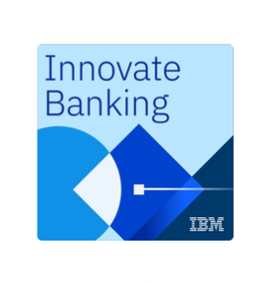Innovation
Digital Bad Banks: Preparing for the Next NPL-Wave
Dezember 3, 2020 | von: innovate-banking
Categorized: Innovation | Payments
Veröffentliche eine Notiz:
Preparing for the Next Wave of Non-Performing Loans
The Covid-19 pandemic has contributed to accelerating the shift to a new lifestyle supported by technology. The virus-lead market disruption has pressured governments to increase their balance sheets and inject unprecedented amounts of money into the economy. Despite this support, a market disruption of such magnitude will likely generate a new wave of Non-performing Loans (NPLs) in the coming years. Given the market conjuncture, “digital bad banks” are a viable option to stabilize markets and cater to investor types that may be interested in the assets behind NPLs.
Leveraging Digital Solutions and Data – the New Digital Bad Banks
While in theory the concept is quite simple, the implementation may be more challenging due to country differences, lack of structured data, outdated loan platforms, among others. However, by outsourcing key processes and leveraging shared service centres that optimize cost structures the task can be simplified. New technologies offer efficient ways to get a digital bad bank up and running in a reduced amount of time, with many benefits for the parties involved. IBM has a track record on managed service projects, delivering productivity increases ranging from 20% to 50% through operating model and process restructuring.
Instead of thinking of a bad bank uniquely as the entity where a bank offloads its risk, it could be conceptualized as a service provided to banks. It has the potential of offering an alternative asset class to sophisticated investors and support restructuring efforts of many banks in Europe. The digital bad bank can become the platform where (loan) portfolios are traded or restructured by new investors.
Through documentation standardization (for example, of Loan Agreements) and advanced data analytics, real-time pricing and rating systems can be developed. This would lead to better risk models that ensure a more transparent and accurate valuation of NPLs and better visibility over assumed risks. Automating and digitalizing these processes expedites the valuation of NPLs, which allows a bank to offload them faster. A digital bad bank would be cost-efficient as banks could focus on their core competencies.
Investors would benefit from a transparent NPL process and the markets for NPLs would benefit from increased participation. States and public institutions would no longer carry the entire NPL burden. If a state does not become the de facto bad bank for its financial market (like in past crises), their borrowing capacity in capital markets will not be as constrained, opening possibilities for other forms of economic stimulus. A digital bad bank can help countries escape the vicious loop whereby they cannot borrow at fair rates, thus not being able to support local banks, which increases risk and leads to even higher borrowing rates.
In summary, the creation of a digital bad bank is an efficient way for institutions to offload bad assets. Through data analytics and AI, it can improve data quality and auditability by as much as 30%. This could save banks around 40% to 50% of costs associated to NPLs. Finally, it creates a new marketplace where investors can either trade loans or restructure them based on their risk appetites. Most of the technical requirements already exist, it is only a matter of time until new players disrupt the NPL market.
Authors

The Software Defined Vehicle
The automotive industry is going through fundamental changes from hardware centric to software-based products. In our report "The software defined vehicle", we describe the required changes of the vehicle E/E architecture and software, OTA updates and the AI/ML closed loop from the cloud to the vehicle. Leveraging DevOps, CI/CD, security, container technology, and virtual testing processes, IBM proposes reference architectures together with organizational changes to bring future-proof client experiences faster to the market and to limit costs and complexity for OEMs.
Owner oder Enabler? Strategische Ausrichtung von Retail-Banken im Kontext des Open Banking
Einleitung Spätestens seit der Einführung der PSD2 ist das Thema Open Banking bei Bankern und Beratern in aller Munde. Eines scheint dabei klar zu sein: Die Tage, an denen die Banken isoliert von ihrem Umfeld arbeiten konnten, sind gezählt. Stattdessen werden sie sich von nun an immer häufiger zusammen mit FinTechs und anderen Anbietern in […]
Verteidigungssysteme bedingt einsatzbereit? Jetzt ist Daten-Aufrüstung geboten!
Zu Beginn des Ukraine-Kriegs hat Bundeskanzler Olaf Scholz eine Zeitenwende angekündigt. Damit einhergehend soll die Bundeswehr besser ausgerüstet werden – unter anderem mithilfe des Sondervermögens von zusätzlichen 100 Milliarden Euro. Das Geld will sinnvoll eingesetzt sein. Höchste Zeit also, um hier ein wichtiges Thema auf den Tisch zu bringen, dessen Potenzial bislang noch kaum angetastet […]
